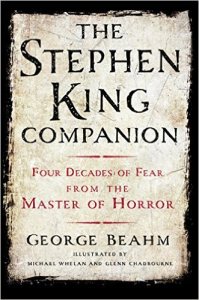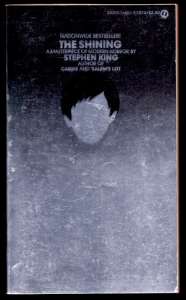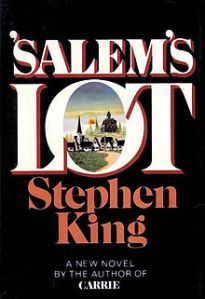The Stephen King Companion: Four Decades of Fear from the Master of Horror
by George Beahm
St. Martin’s Griffin (October 2015)
 Even when confronted with the sheer bulk of The Stephen King Companion: Four Decades of Fear from the Master of Horror – over 600 pages, enough to rival several of King’s own doorstop novels – I went into it thinking, “There’s not going to be much here I don’t know already.”
Even when confronted with the sheer bulk of The Stephen King Companion: Four Decades of Fear from the Master of Horror – over 600 pages, enough to rival several of King’s own doorstop novels – I went into it thinking, “There’s not going to be much here I don’t know already.”
That’s not to say I consider myself a King expert. A huge fan, yes, but expert? I reserve that term for folks like George Beahm, author of this book and its preceding editions, along with contributors like Michael Collings and the late Rocky Wood and my Cemetery Dance comrade Bev Vincent. But my “relationship” with King stretches back into the early 1980s, and in that 30- odd year stretch I’ve read all of his fiction and tons of interviews; I’ve plumbed the depths of YouTube for every speaking engagement, reading and Q&A I could find; and I’ve watched clips of every talk show appearance and news profile I could get my hands on. Through it all I’ve gotten pretty good at seeing the patterns, at knowing how he’s going to ask certain questions, at recognizing the anecdotes he often falls back on when asked a question for the hundredth, thousandth, possibly millionth time. I know the themes he likes to write about, and the phrases that pop up from time to time like old friends.
But…expert? Nah. Overly familiar? That’s more like it. However, during a few days of cherry-picking my way through this massive new volume, I found myself repeatedly surprised by the new tidbits and new insights Beahm and his cohorts are able to present.
So. Surprising. Informative. Let me add “immensely readable” to my list of compliments. The way this book is organized plays a big part in its readability. It would have been easy to do a section on the novels and collections, another on the movies, another on limited editions, and so on – easy, and perfectly acceptable. Instead, Beahm has organized a sort of rambling travelogue through King’s career. The high points are all there, of course, but Beahm knows just when to take a side-trip away from the major works and into other, related territories.
For example, after a chapter on The Stand, the last novel published through Doubleday, we get a quick look at Cemetery Dance’s limited editions of the Doubleday books, a bit on the Bachman books, and then an examination of King’s jump from Doubleday to New American Library. Reading about that move in its proper place on the King Career Timeline really helps put it into context, and is much more effective than having an article on all his different publishers at the end of the book.
There are plenty of similarly interesting asides throughout the book: an interview with King’s main research assistant; looks at the artists who have collaborated with King throughout his career (including Glenn Chadbourne and Michael Whelan, both of whom contributed to the Companion); and, one of my favorites, an essay by author/King scholar Kevin Quigley on meeting King, which is one of the most painfully honest and (sorry Kevin) amusing accounts of fan boy vapor lock you’re likely to read.
I could go on and on, but you get the gist. This is an immersive volume of information and insight, written with care, respect and unabashed love for the subject matter. If you’re the type of Constant Reader with a shelf, a bookcase, or a whole room devoted to Stephen King, you’re going to want to find a spot for The Stephen King Companion.



 One thing I’ve always struggled with is ranking these year-end lists in any kind of order. Traditionally I’ve gone numbers one through ten, but this year I abandoned that concept. It’s just too hard to pick one favorite out of this group. So, this year’s list is ordered alphabetically by author, and as I look back on it now I see ten books that I’ll happily revisit in the future.
One thing I’ve always struggled with is ranking these year-end lists in any kind of order. Traditionally I’ve gone numbers one through ten, but this year I abandoned that concept. It’s just too hard to pick one favorite out of this group. So, this year’s list is ordered alphabetically by author, and as I look back on it now I see ten books that I’ll happily revisit in the future. Undisputed by Chris Jericho
Undisputed by Chris Jericho









